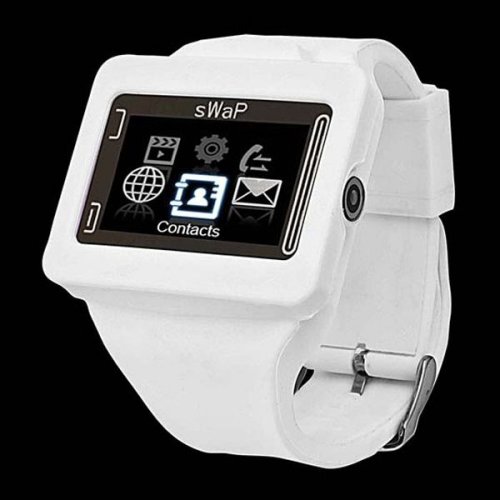It was John Tudor who said “technology makes it possible for people to gain control over everything, except over technology.” I presume when Tudor penned these words he had no idea that it would be one of the most factual statements ever made. It seems today that man is being driven by technology rather than technology being driven by man.
This has so happened because we are not being able to keep up with the fast moving developments in technology. Technology is the most limitless thing in the world, it has no boundaries, and one could say it personifies the word ‘evolution.’ The Encyclopedia Britannica defines technology as “the application of scientific knowledge to the practical aims of life.” In essence technology makes it easier for us to enjoy to an extent, a stress free life through the use of science. We hear or read about new inventions every week, month or year and whenever we are introduced to a new technology we are mesmerized and think to ourselves “I want one of those,” but by the next year or two we read about something even more unbelievable and enticing and we are blown away once more.
But where did it all begin? Who or what paved the way for the numerous gadgets that we enjoy in the 21st century?
The history of technology is very complex and lengthy, it dates back to 3000 BC, popular belief has it that the first calendar was made during this time. Fast forward to 1642 when Blaise Pascal developed a machine with gears and cranks that was able to calculate the addition of numbers, perhaps this was the father of the first calculator. On March 10, 1876 Alexander Graham Bell invented the first telephone. He blazed the trail as it were for Thomas Edison who, in the following years invented the first phonograph, light bulb, electric motor and the first motion picture camera. In the 1900’s Thomas Edison invented the first battery. One could say that Edison was the father of inventions. On June 17, 1946, one of the most popular devices that appear at times to be apart of the human anatomy was invented... yes, you guessed it... the first commercial mobile phone was introduced. Different individuals worked on inventions as the years passed and the first complete computer was made in 1977. The advent of the World Wide Web (www) however was not until 1993. Many years ago we would be in awe at a storage capacity of 256 MB RAM (Read Only Memory) but today even 16 GB RAM still seems inadequate for individuals needing memory to store all sorts of information. Technology is found everywhere; it has become the network of information that holds the knowledge of humankind. We can agree that technology indeed hold the knowledge of humankind because of the different types of technology that exists.


There are six recognized areas of technology: the technology of teaching, instructional technology, assistive technology, medical technology, technology productivity tools, and information technology. The technology of teaching refers to instructional approaches that are very systematically designed and applied in very precise ways. Instructional technology is a systematic way of designing, carrying out, and evaluating the total process of learning and teaching in terms of specific objectives, based on research in human learning and communication. Assistive technology employs the use of various types of services and devices designed to help people with disabilities function within the environment. Medical technology is a part of the health technology which encompasses a wide range of health care products and, in one form or another, is used to diagnose, monitor or treat every disease or condition that affects humans.
Technology productivity tools as the name implies, are computer software, hardware, and related systems that enable us to work more effectively and efficiently. Information technologies provide access to knowledge and resources on a wide range of topics. The internet, and its World Wide Web component, is the most prominent example of information technology. Information technology is possibly the most popular and widely used form of technology... why? Because as humans, we thrive on communication, we have to keep in contact and all times with our family friends and acquaintances and prospective business partners. Information technology is so important to us in the 21st century because it incorporates storing information, protecting information, processing the information, transmitting the information as necessary, and later retrieving information as necessary.
But what enables us in effectively carrying out the previously mentioned activities? Telecommunication... it has been an important part of western culture since the invention of the telegraph in the 1800s. It was initially used as a form of long distance communication. Over the last two decades however, telecommunications has taken on a whole new purpose and plays a much bigger role in our everyday lives.
Telecommunication is a part of information technology that is used daily by every individual, whether it is the radio, television, telephone or the internet. The internet could be considered the total package since it affords us the privilege to fulfill all of our communication needs. We can visit sites and listen to the radio, watch our favorite television shows and movies, and chat with people in a live video chat and stay connected with relatives via email, and social networks such as Facebook and Twitter. With the Internet, people in the world are more connected than ever. Wherever we are in the world and whatever we are doing, there are numerous devices that enable us to connect to the Internet, which helps humans to substantiate the fact that technology knows no boundaries. Founder and CEO of Microsoft Bill Gates said it best, “I think it's fair to say that personal computers have become the most empowering tool we've ever created. They are tools of communication, they're tools of creativity, and they can be shaped by their user.”
Think of a watch… commonly known as device worn on the wrist to tell the time, right? Imagine it doing a whole lot more than that, like going on the internet, making and receiving calls, taking pictures, watching a movie, having Bluetooth capabilities and a colour touch screen… probably impossible right? Wrong.
The Smart Watch and Phone (SWAP) offer those features among others. Just when we thought we’ve seen it all here comes a stylish lightweight watch that caters to all our telecommunication needs. This device would especially be useful for those individuals who are only on the go, who sometimes can’t even find the time to answer their phone, but with the SWAP, one touch and communication begins… talk about hands free operation. Sounds unbelievable? Believe it. Technology holds the power to make our lives better, it is ever-changing and ever developing and we should never limit it because even when we think an invention is so mind-blowing, in two years something better comes along. I just hope we can keep up with this evolution, but whenever we get tired of the old gadgets and feel the need to upgrade there is always a “SWAP.”



cool article!
ReplyDelete